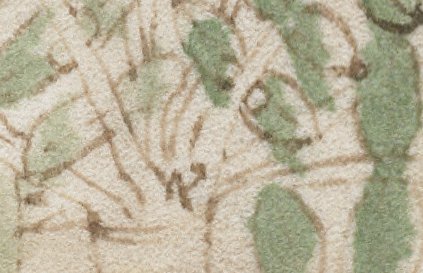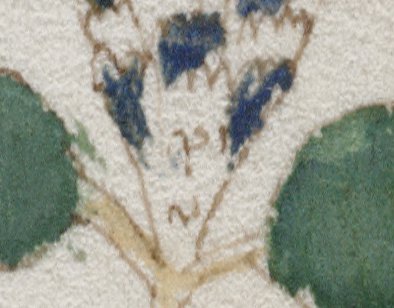I don’t quite know how I manage it but I do keep on tripping over odd stuff, not unlike Christine Jins’ sensitively made peppermill, something definitely not to be sneezed at.
So here’s this week’s microdose of historical weirdness for you, the supernatural Victorian fiction of “engaged feminist” lesbian Vernon Lee (the pen-name of Violet Paget), such as “Prince Alberic and the Snake Lady“. All of which would be a mere footnote to a footnote, were it not for her curious 1895 book “Renaissance Fancies and Studies“, a collection of oddly imagined essays on Art History.
One of its sections is entitled “A SEEKER OF PAGAN PERFECTION : BEING THE LIFE OF DOMENICO NERONI, PICTOR SACRILEGUS”, and is (to my eyes, at least) a bit like a Forrest Gump take on the Quattrocento (there was never a painter called “Domenico Neroni”). In Paget’s imagination, Neroni is “under the influence of that humanist Filarete“, who has had “long and adventurous journeys […] in India and the East, and in Greece, returning to Italy only when Constantinople fell before the Turks. During these years he had acquired immense learning, considerable wealth, and a vaguely sinister reputation. […] He was busying his last year in a great work of fancy and erudition…”
This turns out to be not the real Antonio Averlino “Filarete” (despite all the borrowed similarities), but a “Niccolo Filarete” invented for her task. And his book?
“The book of Filarete, of which the rare copies are among the most precious relics of the Renaissance, was a strange mixture of romance, allegory, and encyclopædic knowledge, such as had been common in the Middle Ages, and was still fashionable during the revival of letters, which merely added the element of classical learning. Like the Hypnerotomachia Poliphili of Francesco Colonna, of which it was doubtless the prototype, the Alcandros of Filarete, though never carried beyond the first volume, is an amazing and wearisome display of the author’s archæological learning. It contains exact descriptions of all the rarities of ancient art, and of things Oriental which he had seen, and pages of transcripts from obscure Latin and Greek authors, descriptive of religious ceremonies; varied with Platonic philosophy, Decameronian obscenities, in laboured pseudo-Florentine style, and Dantesque visions, all held together by the confused narrative of an allegorical journey performed by the author. It is profusely ornamented with woodcuts, representing architectural designs of a fantastic, rather Oriental description, restorations of ancient buildings, reproductions of antique inscriptions and designs, and last, but far from least, a certain number of small compositions, of Mantegnesque quality, but Botticellian charm, showing the various adventures of the hero in terrible woods, delicious gardens, and in the company of nymphs, demigods, and allegorical personages.”
Paget’s pretend Filarete was also busy in Rome, the place where the real Filarete was thrown into jail:-
Strange rumours were current in Rome of unholy festivities in which Filarete and other learned men—some of those whom Paul II. had thrown into prison—had once taken part. They had not merely laid their tables and spread their couches according to descriptions contained in ancient authors; but, crowned with roses, laurel, myrtle, or parsley, had sung hymns to the heathen gods, and, it was whispered, poured out libations and burned incense in their honour.
Paget has her Filarete and Neroni do all manner of unspeakable pagan things before coming to a sticky end in July 1488, allegedly noted in (the real) diary of Stefano Infessura (1435-1500). For a bit of fun, I had a look at Stefano Infessura’s real diary entry for 1488 (p.235 or so, if you’re interested) to see if there was some kind of actual event of the day that Paget had woven into her story… but nothing particularly jumped out at me.
Having myself spent such a long time wondering whether the real Filarete might have assembled a curious book of secrets (enciphered as the Voynich Manuscript), it is decidedly peculiar to read Paget merrily assembling countless historical fragments (such as the Libro Architettonico and the Hypnerotomachia Poliphilii!) into her own faux collage about a similar sounding book. Enough footnotery!


